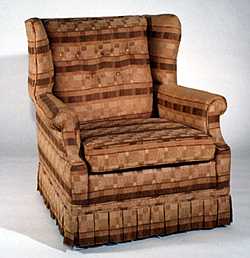 Links to Deeper Meanings
Links to Deeper MeaningsF W Boreham did not have an anthropocentric conception in which the taking of the sacraments merely satisfied a spiritual craving as one of his important views was that the sacramental granted a connectedness to the wider world, including a rootedness within the cosmos and a participation in the sacred realm. For example, Boreham saw the sacrament of gardening not only giving this prosaic activity a ‘glory’ but forging connections in the way:
“It links us not only to the prentice efforts of our first ancestors, but to the
scientific sensations of the distant future. Under an easy assumption of hoary
antiquity and drab monotony, the garden guards the secrets that once read, will
become the marvels of the unborn years”.[1]
Two-Way Connections
Dr. Boreham saw the sacramental connecting in both ways. In elaborating on the responsibility of society’s artists and others who have experienced the sacred, David Tacey says:
This, perhaps, is the key feature of the visionary artist in any country at any
time: he or she ‘sees’ the sacred, when apparently the habitual consciousness of
the day does not. The creative artist is a seer …. The task of the artist is to
remind people that they do in fact have spiritual lives, that they do feel and
sense a level of being that is beckoning them to new awareness and
self-identity.[2]
Mutuality of Connections
A further development in Boreham’s thinking about the mutuality of sacramental connections is found in his story about his armchair, which is reminiscent of the essay entitled, ‘The story of furniture’, by Boreham’s mentor, Richard Jeffries.[3] After admitting that he had spent hundreds of hours in his chair, Boreham argued, “An armchair is more than an armchair ... if we listen with sufficient care, the old armchair is talking to us”.[4]
Finding the Soul of Things
Reflecting on another occasion about his armchair being driven off for auction prior to him relocating, the anguished writer said, “He cannot persuade me that the old armchair is merely leather and oak. Why, the chair all but spoke to me as it passed. There is something extremely soulful about furniture”.[5] The hundreds of hours in which Boreham had spent sitting in the chair had developed its soul. Remarking on the emergence of the chair’s personality and the termination of their relationship, Boreham concluded quaintly:
This has been a one-sided study. It has concerned itself almost exclusively with
my view of the old armchair. But what does the old armchair think of me? The
armchair seems to me to be so much more than leather and oak. Do I seem to the
armchair to be ever so much more than flesh and blood? I catch myself thinking
about the soul of the armchair, ‘Does the armchair catch itself thinking about
the soul of me? And if not, why not?’ And now the secret is out. I said that it
was all a matter of overflow. The soul of the armchair is my own soul
overflowing into the chair.
Geoff Pound
Image: More than an old armchair.
[1] F W Boreham, Mercury, 3 July 1915.
[2] David Tacey, Re-enchantment: The new Australian spirituality, 113.
[3] Richard Jeffries, Beauty is immortal and other essays ed. Samuel J Looker (Sussex, England: Aldridge Bros., 1948), 74-78.
[4] F W Boreham, The home of the echoes (London: The Epworth Press, 1921), 138.
[5] F W Boreham, Australian Christian world, 31 January 1919.


